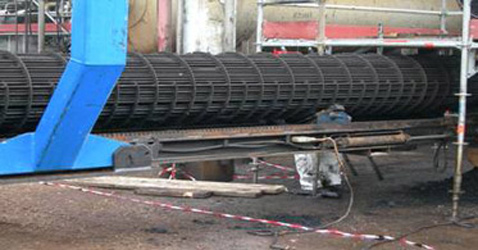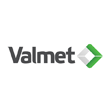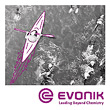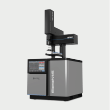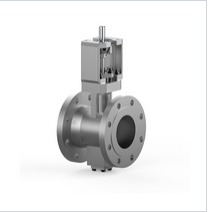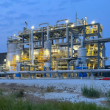Jun-2022
Artificial intelligence for sustainable development
AI and machine learning technologies support the modern hydrocarbon processing industry by adopting business strategies and developing artificial solutions.
GREGORY SHAHNOVSKY, ARIEL KIGEL and GADI BRISKMAN
Modcon Systems
Viewed : 3003
Article Summary
The oil and gas industry currently faces the greatest environmental, health and safety challenges in its entire history. As oil and gas remains a core part of global energy for the foreseeable future, companies need to develop proactive and transparent sustainability strategies that maintain their licence to operate in their traditional business, whilst identifying and securing new opportunities arising from the transition to a low carbon economy.
There are several factors influencing sustainability efforts in hydrocarbon processing to address growing issues that are permanently impacting the industry. Some of the biggest drivers include diversification and digitalisation, which are interlinked with each other to enable industry to reach sustainability goals. As oil and gas companies look beyond the barrel and continue to diversify, it creates more complexity within their operations, which presents additional challenges to their sustainability efforts.
Launched in 2015, the World Economic Forum initiative has determined digitalisation as an indisputable requirement to allow the oil and gas industry to redefine its boundaries. The pandemic has accelerated digitalisation and companies quickly learned that they have to become more agile to respond to major disruptions and demand fluctuations, when the COVID-19 crisis made demand for oil and gas disappear almost instantly.
At present, the oil and gas industry must be flexible enough to respond immediately to feedstock changes and deviations in product demands as a result of the changing global economy. Hydrocarbon processing becomes more sophisticated and companies have invested heavily in cleaner fuel production, molecular recycling, plastic waste reduction efforts, and more efficient and environmentally friendly production methods (see Figure 1). Process optimisation became an undisputable requirement and the only solution to survive in competitive markets.
Formal optimisation using linear programming was started by Leonid Kantorovich in 1939. This traditional optimisation is a supervisory application that delivers optimum set points to process controllers. A major strategy in achieving this goal during the last 30-40 years was to utilise real-time optimisation (RTO) and model-predictive control (MPC), which requires continuous maintenance to accommodate feedstock changes, process improvements, and deviations in environment conditions.
The artificial intelligence (AI) and machine learning (ML) approaches started to emerge in the late 1990s as the third generation of optimisation methods. The idea was to use a limited number of design trials (sample points) to construct a machine learning model between the design variables and objectives/constraints. Just like internet companies that create high value by optimising the commercial assets in the consumer market by data analytics, industrial AI solutions can generate high value by optimising the assets from the process real-time analytics and processes data they have acquired from operations and production. Algorithmic advances in machine learning and deep learning, significant increases in computing power and storage, and huge amounts of data generated by digital transformation efforts make AI a game changer in hydrocarbon processing (see Figure 2).
AI solutions can play an even more important role in achieving sustainable development — from sustainable production, pollution control and water efficiency to industrial safety, clean air and healthcare. These advanced digital applications integrate real-time data and advanced analytics for better decision making, and underpin applications that can dramatically improve process control behaviour, efficiency, and sustainability.
The purpose of the Modcon-AI package is to provide process engineers with a set of modern optimisation tools which enable connectivity, validation, and prediction of main KPIs, to take the correct decisions to maintain and improve effective industrial processes management. The artificial neural network (NN) dynamic models implemented in this solution enable engineers to calculate and predict physical properties and chemical compositions for different process streams, and propose required set points, which will accomplish the calculated predictions (see Figure 3).
Deep Reinforcement Learning (DRL) is a powerful machine learning technique, which can be effectively used to optimise industrial processes for different strategic goals, allowing the user to shift focus intelligently and confidently. The DRL algorithm is a long-standing machine learning framework with close association to optimal control. The mechanism of DRL can be summarised as an agent seeking an optimal policy by interacting with its environment through feedback between observation states and quantified rewards, which can be traced back to a Markov Decision Process (Sutton, 1998).
Reinforcement learning makes use of algorithms that do not rely only on historical data sets to learn to make a prediction or perform a task. Just as we humans learn using trial and error, these algorithms also do the same. A reinforcement learning agent is given a set of actions that it can apply to its environment to obtain rewards or reach a certain goal. These actions create changes to the state of the agent and the environment. The DRL agent receives rewards based on how its actions bring it closer to its goal.
DRL agents can start by knowing nothing about their environment and selecting random actions. Because reinforcement learning systems figure things out through trial and error, they work best in situations where an action or sequence of events is rapidly established, and feedback is obtained quickly to determine the next course of action. There is no need for reams of historical data for reinforcement learning to crunch through. That makes DRL perfectly suitable for optimising hydrocarbon processing tasks using established metrics in the form of inputs, actions, and rewards.
Being a powerful tool, which requires no historical data for reinforcement learning, DRL has one significant weakness, which makes it more difficult to implement for hydrocarbon processing with wide ranges of operation. DRL is likely to improve performance only where the pre-trained parameters are already close to yielding the correct process stream qualities. The observed gains may be due to effects unrelated to the training signal, but rather from changes in the shape of the distribution curve. Therefore, there is a need for real-time monitoring of process yields, rather than only their prediction using the pre-trained models. This can be reached using on-line analysers installed in the process to determine the chemical composition or physical properties of substances involved in hydrocarbon processing.
The Beacon 3000 is an inline, multi-channel Process NIR Analyser. It enables non-contact, real-time monitoring and closed-loop control of physical properties and chemical composition in industrial process applications. Based on novel algorithms, the Beacon 3000 measures the absorption spectrum in the near infrared (NIR) quickly and accurately without labour and material waste. Up to eight field units, which use no electricity and contain no moving parts, can be connected to one main analyser. When used as a part of the DRL implementation, to allow a high fidelity unit model, the Beacon 3000 enables tighter process optimisation and identifies process excursions before they affect yield. The incorporated analyser Freetune software compares its measurements with laboratory test results on a constant basis. In case of continuous deviations, Freetune will automatically correct the analyser’s predicted results to comply with laboratory test results.
The optimised dynamic model obtains real-time data from process analysers, which is verified and validated against laboratory results and predicted product qualities. The simulated process’s digital twin is continuously updated by process analysers to allow the highest possible efficiency of the process at lowest cost. This method enables global process optimisation through integration of the network input and target KPIs, using DRL based optimisation to maximise overall profit and reduce environmental impact.
Add your rating:
Current Rating: 4








